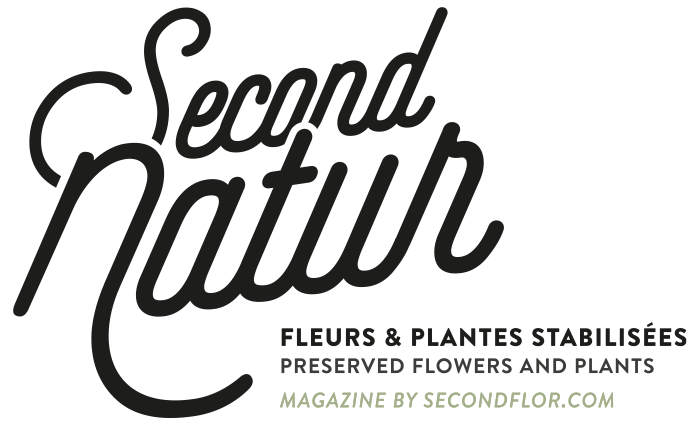Graduated with a master in floristry, Pascal Silvestri has become a renowned trainer, but he has kept some time to practice his floral art. Fond of stabilized flowers and plants, he has been looking for a long time for a reliable wholesaler before finding his partner SecondFlor. He tells us about his journey and his research in this interview.
Secondnatur: Hello Pascal, can you describe with few sentences your career and your activity?
Pascal Silvestri: After an initial training with a Montpellier florist, I can see in 1997 the opening of my own shop. For this, I followed a training course of 4 years in the “Chambre des métiers” of the Gard (South of France).
After many training courses in Europe, I graduated with a master’s degree in floristry and then went on to teach. At this day, I collaborate with two training organizations: Formafleurs close to Lyon (France) and a Neapolitan school in Italy (Le mani parlano).
I also kept my production activity from my workshop, where I intervene in the framework of events and subscriptions.
SN: Since when do you know the preserved flowers and plants?
PS: Stabilised flowers have always been present on the market, but major problems of quality did not really contribute to their use. Today, things are different. The product has evolved considerably, in particular with regard to the issues of variations in the percentage of moisture in the air and also in relation to the loss of colour.
When I discovered Secondflor.com, I found that there is an incredible variety of preserved flowers and plants. The range has expanded, and we can find something other than rose.
SN: On what occasions do you use these plants?
PS: I use stabilized plants in subscriptions for hotels and restaurants. But also in the context of the decorative object, gifts… As well as for the production of vegetal frames, stand decorations, trade shows etc.
I use the stabilized flowers and plants for these occasions because I have more time for the realization of the compositions. But also a greater flexibility in my organization of production and shippings.
The longevity of the product is a factor allowing me to bring more techniques to my work. I would spend more time on a creation because it takes the place of a deco object in its own right, and not as an ephemeral product. The contemplation of work takes place over time and justifies a greater technical intensity.
SN: What do you think are the major advantages of stabilized plants?
PS: Firstly, the longevity that allows an early storage, as well as a considerable reduction of losses.
The diversity of vegetable species present today in the market of stabilized flowers and plants allows a more successful and more aesthetic work.
The colours obtained by the stabilization process also allow the florist to express himself artistically!
SN: What advice would you give to those who wish to start?
PS: The work of stabilized flowers is a special technique. To do so, I would advise testing the product by buying a complete sample, representative of the range.
But also to create a specific space in their shop, to see the emergence of the market.
SN: What comparisons do you make between the fresh and the preserved flowers, mosses, and greeneries?
PS: It’s not comparable at all. The florist must understand that these are not competing, but complementary products. Opening up new possibilities…
SN: How are stabilized plants ecological?
PS: Initially, the flower must be organic for stabilization to be successful. Food dyes are also natural. And of course, the work of stabilized flowers avoids considerable losses, which is a very important factor.
SN: Are stabilized plants a product for the future?
PS: Yes! Stabilized plants already meet existing markets. Example: subscriptions, rental, gifts etc. They express in time all the technicality of the florist, its artistic ability, and contribute to improve its image and its consideration.
Discover his works here such as Fruity Taste ; Cobra Tower or Wedding Lisianthus.

